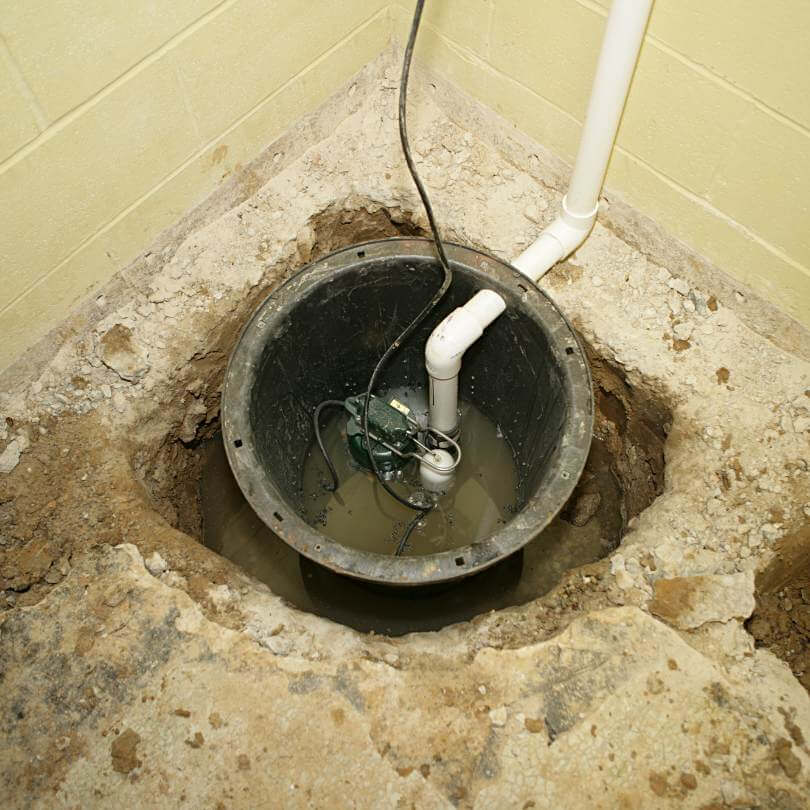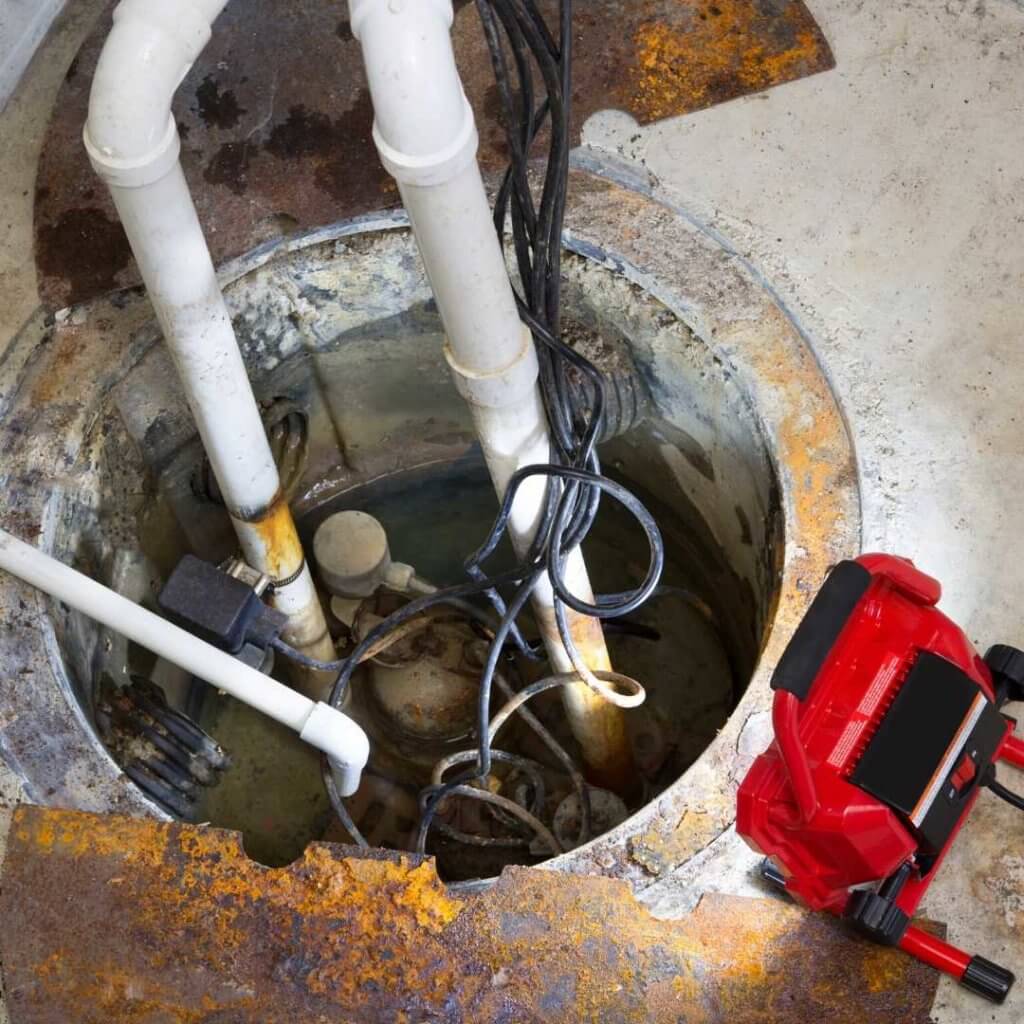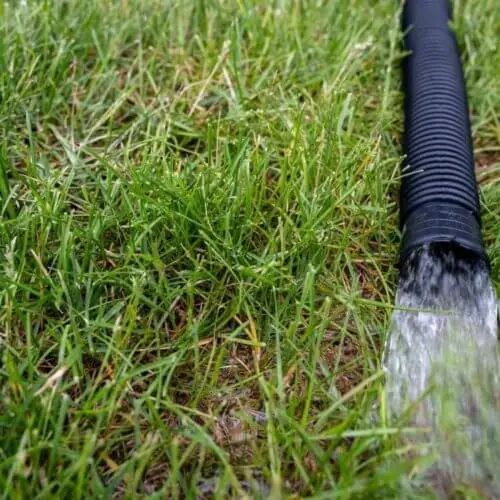“Should there be water in my sump pit?” you may asked.
Sump pits are essential for keeping the basement dry. They catch excess water and allow the sump pump to remove it.
In addition, sump pits reduce radon gas. Finally, the sump pit prevents soil gases from entering your property.
The pump and the pit are the two components of a sump pump. Water in and around your basement drains into the pit. The pump is triggered when the pit overflows, which then pumps the water away from your property through the discharge pipe. Your basement won’t flood if the sump pump is installed and maintained properly. [1]
The floor should be slightly inclined so that any water that enters the basement will find its way to the sump pit. This will prevent water from collecting in other areas of the basement.
The sump pump automatically pumping once the water in the sump pit reaches a particular level. The pipe then discharges the excess water to a designated drainage place, such as a dry well, or a storm drain. A correctly installed sump pump should activate long before the water level in the basement rises [2].
Should There Be Water in My Sump Pump Pit?

A sump pump pit will frequently have a small amount of water in it. This is because the pump only activates when the water reaches a certain level.
As a result, a small quantity of water may collect at the bottom and remain there during rainstorms or after the pumping cycle is finished. So having some water in your sump pump is perfectly normal because it is designed to fill with water. The pump is designed to shut off when about that much water is left in the pit[3].
No water in sump pump pit
Sump pits collects water to be fed into the pump, usually by gravity. This implies that the sump pit will always contain some water. Depending on the pit, there are many criteria for how high the water will sit. The pump will activate as the water rises over a certain point and remove the water before it soaks into the basement.
A dry sump pump pit indicates that no water is accumulating in your basement, which is good news. However, a dry sump pump pit is only a problem if standing water is in other areas of your basement. For example, the floor may not be angled properly if water is not entering the sump pump pit. Similarly, water may be entering in an unanticipated method, in which case another sump pump pit may need to be dug.
A dry sump pump isn’t always a good thing. The plastic and rubber parts of the sump pump may wear out prematurely if the pit is dry. As a result, the sump pump will need to be fixed or replaced much more quickly than it otherwise would. In addition, if the sump pump is dry, there can be a drainage issue.
There are times when your sump pit can be full of water. In the same way that you don’t want a sump pump pit always to be dry, you don’t want the pit always to be filled with water. This can signify that the water table is too high where the pump is positioned. Additionally, there can be an issue with the sump pump in the form of a blocked or frozen discharge line, which might obstruct water flow.
A sump pump pit may also overflow due to problems with your home’s plumbing system. For instance, a broken sprinkler system, sewer line, or water line might cause water to seep into the ground near your home’s foundation.
How Does Water Get into The Sump Pump Pit?

A wide range of factors governs water movement through your house. For example, through the sump pit, water will enter the sump pump system. It is then supplied into the sump pump, where the water is drained out and away from the house to prevent any damage to property.
Several pathways can allow the water pumped from your house to enter the system. If there is a high-water table, the sump pump will be positioned as a perimeter drain or supplied by gravity when it rains. Water enters the sump pit in the following ways:
- Through Drains
Drains are one of the most typical way to introduce water into the sump pit. It makes no difference if these drains are found within or near the house’s exterior.
Surface drains may prevent surface water issues from developing in the basement or bathrooms. These drains offer a simple means of directing water toward the sump pit.
However, the drains aren’t the most dependable means of getting water flowing directly into the sump pit, as you might expect. The surface drains can still leave the area they occupy moistly, which could eventually lead to some other problems.
- Through Soil
Water always takes the route with the least amount of resistance. This means that it’s typical for water seeping into the ground following a severe downpour to find its way through the soil and cement foundation. If there is a high water table in the area, water may rise from underground. The sump pump is the best line of action if you have a high water table and a moist basement [4].
Those who live in places with high rainfall, whether regular or seasonal, frequently experience issues with excess water from underground. Other measures of defence in the home are commonly overwhelmed by these rapid water spurts. If a sump pit isn’t deep enough or designed properly, the heavy rain may affect it, causing moisture problems in the basement.
- Drain tiles
A drain tile is one of the most popular construction techniques for sump pits. These perforated tiles are arranged horizontally under the earth. Water is guaranteed to collect where you need it to because of the slope of the drain tiles. These tiles can be found anywhere, although they are most frequently seen near a home’s foundation.
How to check the water level in a sump pump
The sump pump must be regularly checked and tested to guarantee efficiency. Moreover, the water level inside the pit must be monitored to prevent an overflow in case the pump fails. Having the right water level is crucial so the pump can rest in between pumping cycles. This will help save the pump from wearing out faster than it should.
- The first thing to remember is that all the pumps should be inside the sump pit. You may need to feed drainage points throughout the home on top of the sump pit or trust gravity to direct excess water to the proper location.
- The pump’s top should have an exit pipe that leads outside the building. This could be spread across the ground or high up in the wall of the sump pit. The fact that the water doesn’t reach the pump’s exit point is what matters most.
- You’ll need to adjust your pit’s water level using the float valve. The float valve activates the pump. There is need to have some water at the bottom of the pit for the pump to function properly. A maximum of 2-3 inches of water in your sump pit is required to keep your pump happy and ensure that it performs as intended when you need it to If the water level is very high, the pump won’t have enough time to remove the extra water before it seeps into your house.
- When the water level is 6-7 inches below the level of your floor, the pump should begin to operate. This means that the sump pit needs to be about 10 inches deep. Of course, it can go deeper than this, and that will provide you with more cushion in case something goes wrong.
- You must inspect the float switch and the pump unit to see whether your water level is adequate. The float switch, which resembles a ball floating on water, may be found close to the drain pipes. The pump should start when you shake the float switch. After testing it, if the float switch is broken, you must replace it. Otherwise, it can cause a significant issue for your basement.
Read Also: Sump Pump Running Every 5 Minutes
Conclusion
It might be good news if there is no water in your sump pit. But since it is designed to contain water, it is entirely acceptable if a few inches are present.
You should only be concerned when the pit is full yet your pump doesn’t appear to be making any difference. Purchasing a larger pump will speed up the pumping procedure and remove the water more quickly.
Have the sump pump pit and foundation inspected by an expert. A professional can help you identify the issues causing too much water to build up in the pump pit and install a practical drainage system.

Michael Davis is a heating & plumbing expert who currently works as independent contractor in SC. He also writes for Plumbertip.
For almost 10 years he worked on various plumbing tasks across South Carolina.


